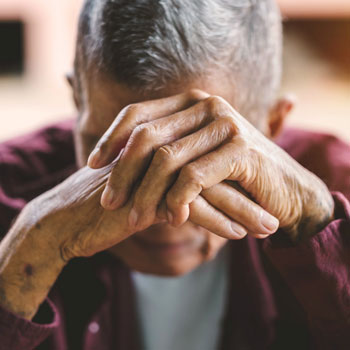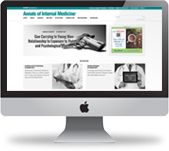
Handling H. pylori resistance
Antibiotic resistance will change how physicians manage Helicobacter pylori, per a new guideline.
A recent guideline for Helicobacter pylori treatment could upend business as usual for internal medicine physicians by recommending a different combination of drugs, in an effort to stem increasing antibiotic resistance and declining H. pylori eradication rates.
But implementing these overhauled and, in some cases, complicated options poses challenges in several areas, including patient adherence, insurance coverage, and comanagement.
The updated guideline, published in the American Journal of Gastroenterology in September 2024, comes at a critical time in H. pylori treatment, said lead author William Chey, MD.
H. pylori, a risk factor for gastric cancer and chronic gastritis, affects 30% to 40% of people in North America. The most commonly prescribed first-line treatment has been triple therapy with a proton-pump inhibitor (PPI), clarithromycin or levofloxacin, and amoxicillin, but resistance rates currently exceed 30%, and H. pylori eradication rates for PPI-based triple therapy are less than 70%.
“You should not be using that regimen containing clarithromycin or levofloxacin as either first or salvage therapy without confirmation of antibiotic susceptibility,” said Dr. Chey, who is the H. Marvin Pollard Professor of Gastroenterology and chief of the division of gastroenterology and hepatology at the University of Michigan in Ann Arbor.
While some resistance can be overcome by increasing doses or using a potassium-competitive acid blocker (PCAB), resistance to certain antibiotics, like clarithromycin, is absolute, he said. That concern, along with recent evidence proving the efficacy of newer regimens and ways to test for antibiotic resistance, prompted the ACG to update its 2017 guidelines.
Optimized bismuth quadruple therapy (BQT), which Dr. Chey called the new backbone of therapy for treatment-naive patients with H. pylori infection, was the guideline's only strongly recommended option. It consists of bismuth subcitrate (120 to 300 mg) or bismuth subsalicylate, 300 mg, four times daily; metronidazole, 500 mg, three or four times daily; tetracycline, 500 mg, four times daily; and a standard-dose PPI twice daily for 10 or, preferably, 14 days. This regimen is appropriate for patients with a penicillin allergy.
Conditional recommendations support rifabutin triple therapy (omeprazole, amoxicillin, and rifabutin) or dual therapy with vonoprazan and amoxicillin for 14 days. Levofloxacin triple therapy (vonoprazan, levofloxacin, and amoxicillin) is suggested in treatment-experienced patients with known levofloxacin-sensitive strains of H. pylori, as well as those who have already tried optimized BQT or rifabutin triple therapy. It is also suggested if optimized BQT or rifabutin triple therapy is not available.
“This is a major change,” said Jacob Mathew Jr., DO, MBA, FACP, a primary care physician in Pueblo, Colo., and adjunct professor at the University of Colorado in Boulder. “Unless you do susceptibility testing, which is expensive and not available to everyone, you need to change your practice.”
Getting it right the first time
To have the best chance of eradication, the guideline recommended that physicians not separate H. pylori testing and treatment. “Clinicians should not think about H. pylori as ‘Who do I test?’ and ‘Who do I treat?’,” said Dr. Chey. “If you decide to test [patients]… you have to offer them therapy.”
Although patients with H. pylori often present with dyspepsia, testing will depend on their age and other symptoms, said gastroenterologist Kerry Dunbar, MD, PhD, a professor in the department of internal medicine at UT Southwestern Medical Center in Dallas. For the first time, the guideline formally recommends H. pylori testing in people who live with an infected individual, as well as testing patients with a family history of gastric cancer. Other indicators for testing noted in the guideline, such as iron deficiency and anemia, are not new, but they are not well known, said Dr. Chey.
Patients who present with alarm symptoms (e.g., weight loss, dysphasia) should be referred to a gastroenterologist, according to Dr. Dunbar, but internal medicine physicians can manage initial H. pylori testing for most patients with the nonendoscopic urea breath test and the fecal antigen test. To avoid getting false-negative results, patients should stop taking acid-blocking medications two weeks before and antibiotics four weeks before testing, she said.
Dr. Mathew noted that the breath test isn't available everywhere and that patients sometimes balk at the stool-based test. To address this hesitancy, he discusses the connection between H. pylori and gastrointestinal cancer risk and tells patients, “If we catch this early, we can change your life.”
Dr. Chey recommended pointing out that if the treatment works, there's less than a 1% chance of re-infection. “Once you're cured, you're cured,” he said, and no follow-up is needed. However, if patients don't complete the treatment course or if they take a course of antibiotics they are resistant to, the eradication rate falls. “It's important to get it right the first time,” he said.
To choose the best option, find out what antibiotics patients may have taken during their lifetime for any reason, whether they have any antibiotic allergies, or if they are pregnant or breastfeeding, said gastroenterologist Cynthia Cohen, MD, ACP Member, an assistant professor at New York Medical College and associate program director for the gastroenterology fellowship at Westchester Medical Center in Valhalla, N.Y.
Patients previously treated for H. pylori likely received the PPI, clarithromycin, and amoxicillin regimen. If they are still infected, they should receive optimized BQT, Dr. Chey said. When it's not clear what treatment the patient has had—patients don't always remember—antibiotic sensitivity testing can help choose the appropriate regimen, he said. If that's not an option, Dr. Cohen said the new optimized BQT is worth trying since changes in dosages from previous treatments may lead to better outcomes.
The guideline cautiously noted that if first-line therapies are not available, clarithromycin- and levofloxacin-containing treatment regimens (using PCABs, not PPIs) should be an option for certain patients, especially those who are treatment-experienced with confirmed persistent H. pylori infection and with strains known to be susceptible to those antibiotics.
Dr. Cohen said dual therapy with vanoprazan and amoxicillin is a good option for patients who will struggle to adhere to the optimized option and do not have a penicillin allergy. She said she had previously used this only as a salvage therapy but will now move it to her list of first-line options, given the guideline's new recommendations. Although it can be challenging to get dual therapy covered by insurance, she's hopeful that having the guideline's recommendation may change that.
Patient management
But even the best plans won't work if adherence rates are low. Dr. Mathew tries to narrow down the best course of action by first asking patients what time they normally wake up and what they're doing four hours later and at other times when medications would need to be taken. He asks if they have trips or big parties coming up and about their support system (e.g., if they live alone).
If he believes the optimized course is the best option, he tells patients who are concerned about the complicated dosage regimen, “I prefer this because it's been shown to be superior. This will be annoying but it's only for two weeks. … But if you feel it will be very difficult to maintain, I prefer you to be on the one you know you can finish.”
Patients are most likely to be able to adhere to optimized BQT if they have a lot of support, are retired, have no cognitive issues or daytime distractions, are treatment-naive, and have a pill box with a reminder alarm to take four medications four times a day, Dr. Mathew said. But for others, adherence can be challenging even if they are armed with a color-coded calendar that lists pills and times of dosages to check off. He noted that, for example, his patients who work in oil fields would likely only take their medications at breakfast and dinner. “We need to individualize to lifestyle, or we're doing the patient a huge disservice and [treatment] is likely to fail,” he said.
Dr. Cohen said that shared decision making is critical for selecting the best H. pylori treatment and that physicians should expect to do a lot of counseling. For example, insurance may cover some but not all of the four medications for the optimized BQT, and patients may then start taking only the ones they were given. Some also may be confused by having to find bismuth over the counter. “There's a lot that can go wrong on the patient side,” she said.
Even if patients want to adhere, they often don't because of side effects. Dr. Cohen recommended letting them know what to expect, especially from drugs likely to turn stool dark, cause an upset stomach, interact with iron supplements and alcohol, and create sun sensitivity. Dr. Mathew has a nurse do a quick call every four days during the treatment period to discuss any side effects the patient is experiencing and try to prevent them from stopping the regimen mid-stream.
The guideline addressed using probiotics for treatment because patients raise the issue, Dr. Chey said. He said that there is no high-quality evidence to support the idea that taking probiotics with antibiotics for H. pylori might increase efficacy and reduce side effects but that it's worth investigating the hypothesis in larger controlled trials.
“Do I think [probiotics] will hurt?” asked Dr. Dunbar. “No, but they don't cure” H. pylori. And for now, she said, patients have options that do.
Next steps
The guideline recommended that patients be tested for cure after therapy ends, saying this step is “too often overlooked” and can leave patients with persistent H. pylori infection. Wait four weeks after the two-week treatment ends to test, since H. pylori is still dying off and sheds in the stool, which could lead to a false-positive result, said Dr. Dunbar.
Dr. Cohen said she takes no chances: During her call with patients who are about to begin treatment, she schedules a follow-up breath test for six to eight weeks later.
If the infection has not cleared up, don't assume it's because the therapy failed, said Dr. Mathew. He recommended having a checklist of other possibilities to ask patients: Did the patient take an antibiotic for any other reason (e.g., pneumonia) during the course of treatment? Did they take all of the medication and if not, why not? Were they confused? Were the side effects an issue?
Dr. Mathew said he personally calls patients after the 14-day therapy period to ask these questions so he won't be surprised with the test-of-cure results. If the patient did take all of the medication as prescribed and hasn't been cured, Dr. Dunbar recommended looking at how soon the test for cure occurred and consider if it may be worth waiting another four weeks and testing again.
The next step depends on what was done first. If the patient did not take the medications as prescribed, discuss trying the same regimen again. (Dr. Mathew cautions that patients who still have an infection after a course of treatment will often inaccurately report that they finished the antibiotic to not upset the physician.)
If the patient still tests positive after completing a course of treatment and had traditional therapy with clarithromycin, has experienced failure with more than one regimen, has been on a lot of antibiotics in the past for other issues, or has a penicillin allergy, susceptibility testing may help, Dr. Dunbar said. However, because this testing is expensive and time-consuming, she said it should be reserved for patients who have taken their medications correctly—perhaps twice—and still test positive for H. pylori.
If a patient did complete the regimen but does not want to have susceptibility testing, consider rifabutin triple therapy or PCAB-containing therapies, Dr. Dunbar said. And if the patient still has unexplained GI symptoms such as abdominal pain and indigestion, Dr. Dunbar said it's time to refer them to a gastroenterologist. At that point, expect the gastroenterologist to manage the patient. “If I diagnose a patient with H. pylori, I'll treat [him],” she said.
Regardless of the path forward, Dr. Mathew said he is pleased that the guideline highlights the role of the primary care physician and the importance of the patient- physician relationship. He said that's why he never uses the word “fail” with his patients who adhered to a first regimen that did not work. “I say, ‘This happens, so let's do a different one. How often do you want to check in? Would you like a medication nurse?’” Most importantly, he said, he asks, “Where can I help you so we can be successful?”



